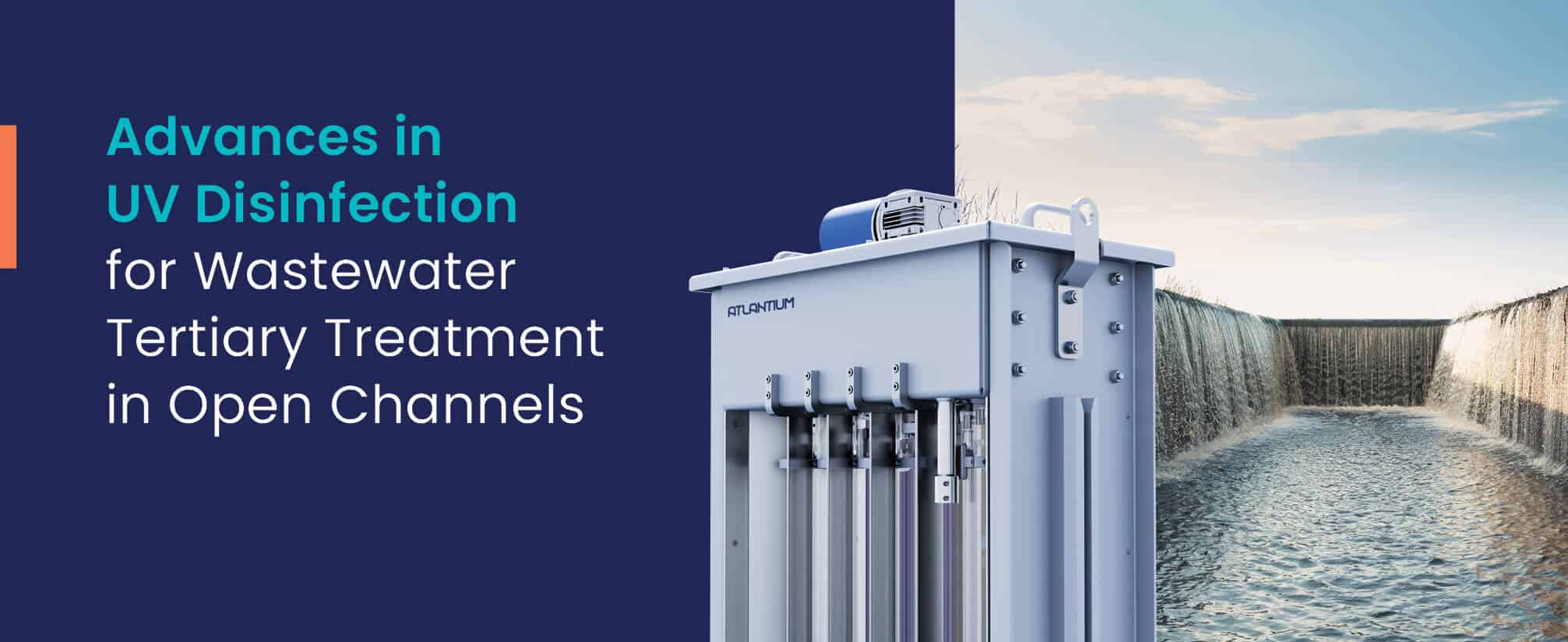
Across the globe, the conversation around water reuse is intensifying. As urban populations grow and climate variability threatens traditional water supplies, the need for sustainable, safe, and efficient wastewater treatment has never been more urgent. Many municipalities are now pursuing aggressive reuse targets, particularly for agricultural irrigation, industrial applications, and even indirect potable use.
Yet one of the most overlooked challenges in achieving these goals lies in a core step of the treatment process: disinfection.
Traditionally, chlorine and similar chemicals have been the go-to solutions for disinfecting effluents, especially in open-channel configurations common in municipal wastewater treatment plants. While these agents are effective at neutralizing pathogens, they come with significant environmental and human health trade-offs – costs that are becoming increasingly difficult to ignore.
The Problem with Chlorine and Chemical Byproducts
When chlorine is introduced into open channels, it does not simply vanish after completing its task. Residual chemicals leach into surrounding ecosystems, particularly when channels flow into natural water bodies. These compounds, and their disinfection byproducts (DBPs), have been shown to harm aquatic life, disrupt reproductive cycles, and accumulate in sediments, creating long-term ecological imbalances.
Beyond environmental concerns, there are very real risks to plant operators and neighboring communities. Chlorine gas is highly toxic and requires careful handling and storage. Accidental exposure, even in small quantities, can result in serious health consequences. In regions where safety infrastructure is limited, these risks are magnified.
Moreover, chlorine-based disinfection often struggles with effectiveness across all microbial life stages, especially in high-flow systems or when effluent contains suspended solids that shield pathogens from exposure. In such cases, higher doses are required, exacerbating the very risks utilities are trying to manage.
The Shift Toward Chemical-Free Disinfection
In response, a growing number of municipalities and utilities are rethinking their approach. Around the world, operators are turning to chemical-free disinfection technologies that offer both environmental and operational advantages.
At the forefront of this shift is ultraviolet (UV) disinfection, a method long known for its efficacy but historically limited in open-channel applications due to challenges with flow variability, lamp fouling, and energy efficiency.
However, that’s beginning to change.
Advances in UV Disinfection for Open Channels
Recent technological advances have dramatically improved the feasibility of UV systems in open-channel settings. High-powered 1000-watt UV lamps, for example, are now capable of delivering effective pathogen inactivation even in wide, fast-moving canals. When paired with optimized canal designs, featuring baffles or channel modifications to ensure uniform exposure, these systems can now match or exceed the performance of chemical treatments, with far fewer externalities.
Real-time monitoring and automation have also transformed how these systems operate. Integrated sensors can continuously assess UV transmittance, flow rates, and lamp output, adjusting dosage dynamically to maintain disinfection performance while minimizing energy use. This results in reduced operational costs, longer equipment lifespans, and a more predictable maintenance schedule.
Crucially, these systems can handle a wide range of effluent conditions without the need for chemical additives, aligning with the growing regulatory push for cleaner, greener solutions.
Meeting Stricter Reuse Standards Without Compromise
As regulations around wastewater reuse continue to tighten, particularly for applications involving human or environmental exposure, utilities are being asked to deliver more with less. More safety, more reliability, more transparency with less chemical dependency, less environmental impact, and less public concern.
Chemical-free disinfection, once considered unfeasible for open channels, is now not only viable, but in many cases superior. With the right system design and operational strategy, municipalities can meet stringent microbial targets while advancing broader sustainability goals.
We no longer have to choose between public health and environmental responsibility. With UV-based disinfection, both are possible.
A Call to Reevaluate
It’s time for utilities and city leaders to take a hard look at their legacy disinfection infrastructure. What served us well in the past may no longer be sufficient, or acceptable, in the face of today’s challenges.
With the technology now available to deliver powerful, chemical-free disinfection in even the most demanding open-channel environments, the case for change is clear.
Water is too valuable and too vulnerable for outdated solutions. The future of wastewater treatment is clean, sustainable, and chemical-free. All we have to do now is utilize it widely.

About the author:
Ytzhak (Itzik) Rozenberg leads a multidisciplinary R&D team in the development of “green” solutions for municipal and industrial applications based on Atlantium’s proprietary HOD™ (Hydro-Optic Disinfection) UV system and Atlantium Marine’s Purestream™ UV Ballast Water Management System (BWMS). For more than 30 years, Rozenberg has transformed optics-based technologies into products in the biomedical, military, and industrial consumer goods markets. Prior to joining Atlantium, Rozenberg was VP for R&D at Lumenis where he was responsible for all medical applications and played a major role in founding and establishing OpusDent — the company’s first spinoff. He holds a Bachelor of Science in mechanical engineering.







